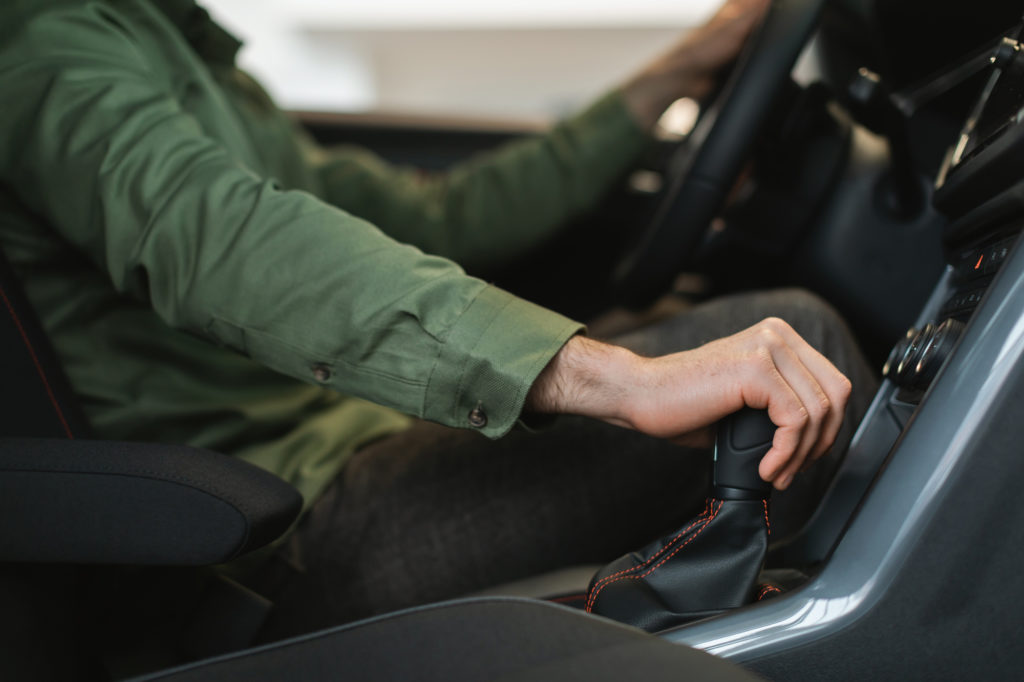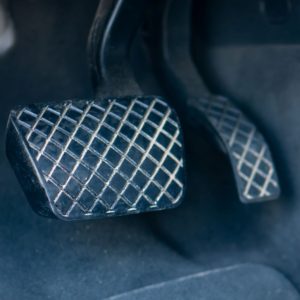Every driver knows how conventional brakes work. But aside from the usual foot and hand brakes, there’s another way to slow down your vehicle, and it’s commonly referred to as engine braking.
What Is an Engine Brake?
Engine braking is the process of slowing the vehicle down by shifting to a lower gear, letting the engine absorb energy instead of relying on the brake pedal and friction brakes.
On a manual transmission equipped car, a skillful driver will shift to a lower gear when decelerating. The momentum of the vehicle (kinetic energy) drives the engine that way, and since the engine isn’t providing power but is being driven, it resists the driving force. The wheels apply this power through the drivetrain and axles, where it is applied to the engine itself.
During deceleration on fuel injected engines, the fuel injectors are turned off to prevent unnecessary fuel delivery when there’s absolutely no reason the engine needs fuel. This not only helps with economy, but it also helps prevent exhaust backfiring. It’s also during this kind of non-powered deceleration that a “crankshaft learn” waveform is stored in the PCM. That waveform and the cam sensor input is used by OBD2 software algorithms to identify misfiring cylinders.
During deceleration on fuel injected engines, the fuel injectors are turned off to prevent unnecessary fuel delivery when there’s absolutely no reason the engine needs fuel.
– Richard McCuistian, ASE Certified Master Automobile Technician
This helps slow the vehicle down and can reduce brake shoe and pad wear. Similarly, hybrid and electric vehicles will alter their electronics during deceleration so that the momentum of the vehicle drives the motors in the transmission/transaxle, creating a burst of power that charges the battery.
How Does Engine Braking Work?
As the driver releases the accelerator pedal, the intake air valve closes and creates a vacuum. This process restricts air flow from the cylinders, resulting in decreased energy output. The resistance in the engine creates a braking force and lets the vehicle slow down without using the foot brake.
Do Automatic Vehicles Have an Engine Brake?

Automatic transmissions also work this way: during deceleration, the car is driving the engine through the driveline and the transmission. Automatic transmissions on pickup trucks may have a “coast clutch” for the purpose of automatic engine braking due to their potential for towing heavy trailers, but all automatic transmissions tend to have an intrinsic engine braking function when the accelerator is released.
What Does Jake Braking Mean?
Jake Brake is a trademark name for a type of engine braking system commonly found in diesel trucks. It’s a supplemental braking system that helps trucks stop faster with the addition of the foot brake.
Jake Brake technology releases air and energy from the exhaust valve after the first compression stroke. Because there’s nothing to push the piston back down, the vehicle slows down in the process.
You’ve probably heard Jake brakes on semi trucks when they’re slowing on the freeway, because of the odd regular popping through the exhaust that sounds almost like a machine gun.
Engine Brake vs. Jake Brake
The main difference between an engine brake and a Jake brake is their operation. The engine brake, which is attached to the exhaust system, creates pressurized air inside the cylinder head to push the piston on the downstroke. The pressure increases because of a closed valve, which in turn forces the vehicle to slow down.
The Jake brake, on the other hand, releases compressed air instead of creating it. The Jake brake is typically attached to the valve train, releasing pressurized air as the pistons reach the top.

The Jake brake is considered to be more powerful than an engine brake. It can churn out braking power slightly above the engine’s power output while its counterpart can only exert 60 to 80 percent of power.
But while the Jake brake is far more effective than an engine brake, it can produce excessive braking noises, which is why the use of such technology is banned in some areas. In some places, Jake brakes can be used as long as the vehicle has a muffler that can minimize the noise.
Benefits of Engine Braking
Engine braking offers several benefits that can help prolong your vehicle’s lifespan. Here are some of the most common ones.
Reduces Brake Wear
By relying on the engine brake, parts like the brake pads and rotors won’t get used as much, which means it’ll take longer for them to wear out. Engine braking also reduces the chances of brake fade, which occurs when there’s too much heat between brake parts to the point where it’s nearly impossible to create negative force to slow the vehicle down.
Better Vehicle Control
The vehicle stays in gear whenever you make use of engine braking, creating a natural, smooth, and consistent force. Pedal braking, on the other hand, can upset the vehicle’s balance and make it harder to control.

Improved Fuel Economy
Again, during engine braking, the powertrain control module (PCM) cuts off the fuel supply to the injectors, which slightly improves the vehicle’s overall fuel economy.
Controlled Downhill Driving
Driving downhill while the gear is in neutral can make the brakes work harder because of gravity. Engine braking can prevent the brakes from generating too much heat caused by friction and lets the driver control the vehicle better.
Improved Stopping Ability
Engine braking and applying the foot brakes at the same time can lead to a faster stopping time while reducing wear on several brake components.
When Should You Use Engine Braking?
Engine braking is best used during downhill driving or whenever you’re on a decline. Such driving situations tend to increase the vehicle’s momentum and require more stopping force than normal to slow down the vehicle.
Keep in mind, however, that engine braking should only be used if you know your vehicle well enough, especially when it comes to rev changes and gearing. You could risk damaging the engine if you shift into the wrong gear, so make sure that the vehicle is in the proper range before tinkering with the gear shifter.

If you’re driving an automatic, avoid shifting to L while the vehicle is in motion. Ensure that the vehicle is at a complete stop before switching gears.
Engine Braking vs. Downshifting
Engine braking and downshifting are two entirely different things. Engine braking is releasing the accelerator pedal while the vehicle is still in gear. Meanwhile, downshifting is switching to a lower gear while the vehicle is in motion.
The Bottomline
Engine braking is a practice that provides several benefits for your vehicle. But as convenient as it might be, engine braking should only be used if you know your vehicle well enough. Shifting into the wrong gear can cause the needle to shoot above the red line and damage critical parts of the engine. When done correctly, your vehicle can experience benefits like reduced brake wear, improved fuel economy, faster stopping time, and more.
Lastly, engine braking is ideally used when you’re on a decline, mainly because such driving conditions will require more stopping force than necessary. When applied with the foot brake, engine braking can help stop the vehicle more efficiently.
Any information provided on this Website is for informational purposes only and is not intended to replace consultation with a professional mechanic. The accuracy and timeliness of the information may change from the time of publication.



























